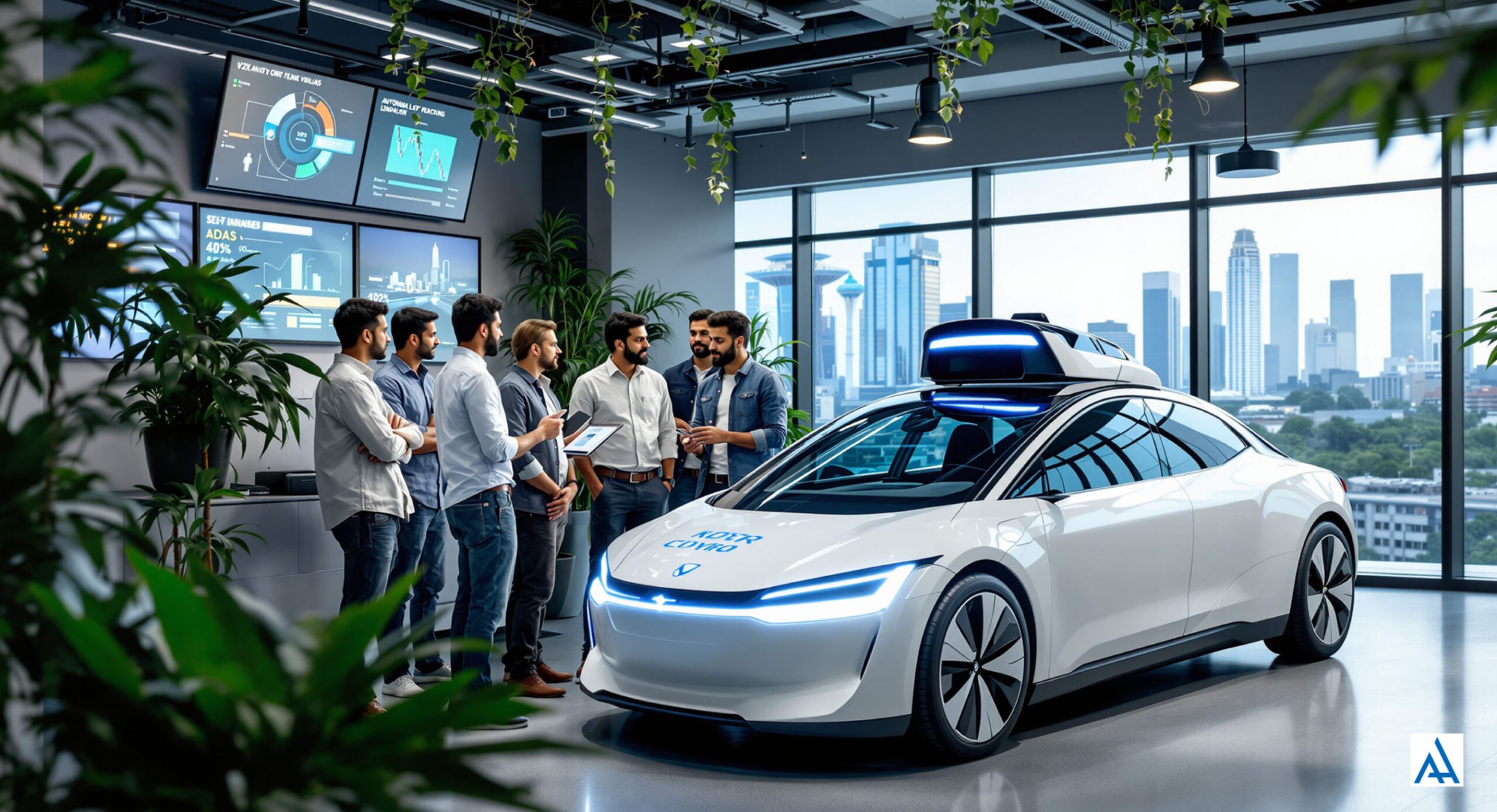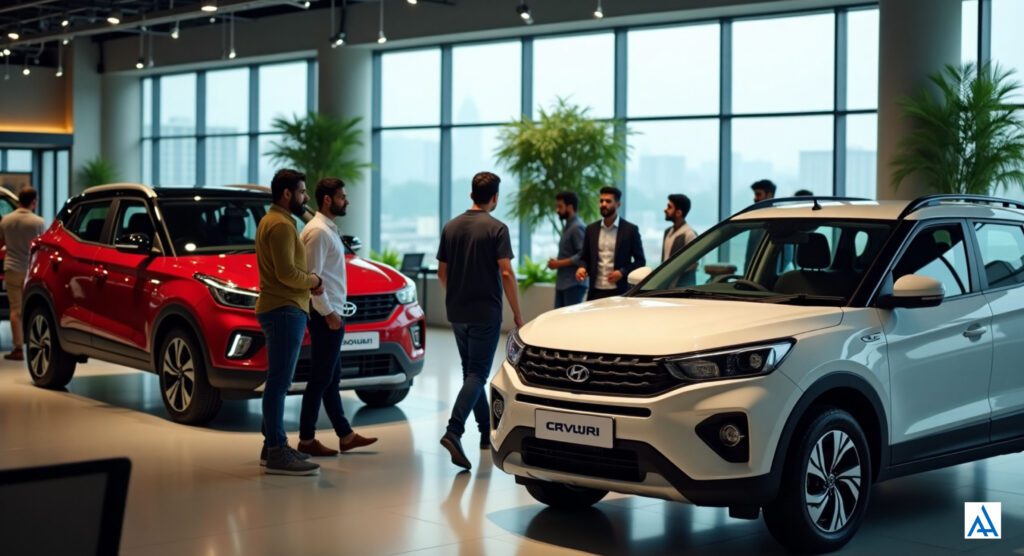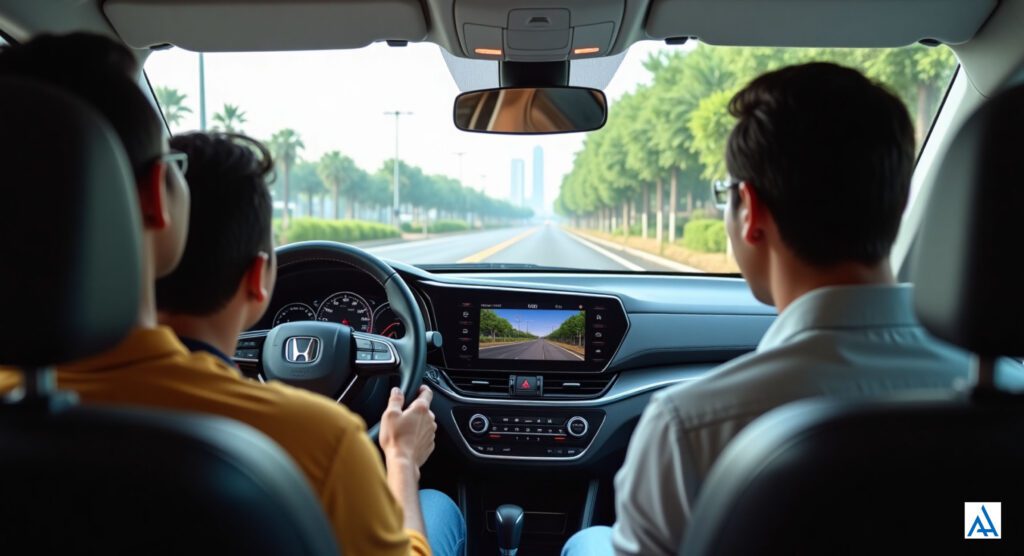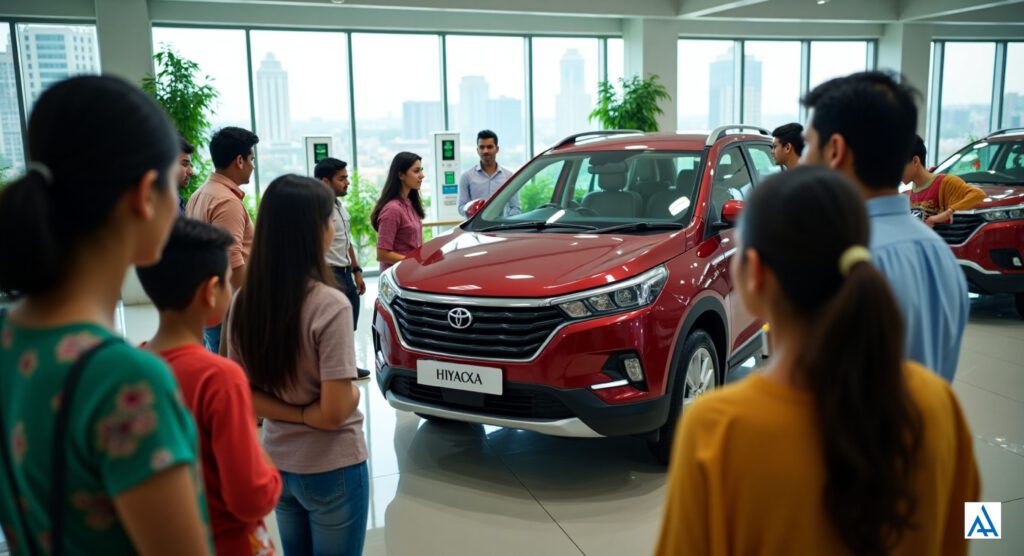In 2025, autonomous driving technology is reshaping India’s $150 billion automotive industry, promising safer roads, reduced congestion, and eco-friendly mobility (Inc42, 2024). With 60.4% of India’s population digitally connected (RBI, 2024) and 63 million MSMEs relying on efficient transport (MSME Ministry, 2024), self-driving vehicles are set to transform urban and rural landscapes. As 70% of Indians prioritize sustainable solutions (Knight Frank, 2024) and India supports 3,500 IGBC-certified green projects (FICCI, 2024), autonomous driving aligns with a 6.5% GDP growth rate (UJA, 2025) and 40% renewable energy goals (CEA, 2024).
Why Autonomous Driving Technology Matters in 2025

Autonomous driving technology, powered by AI, sensors, and connectivity, enables vehicles to navigate without human intervention. In India, where urban congestion costs ₹1.47 lakh crore annually (Economic Times, 2024) and 23,088 cyber incidents challenge digital trust (CNBC TV18, 2024), self-driving systems reduce accidents by 30% and cut traffic delays by 20% (Financial Express, 2024). Supporting 50% of global UPI transactions (NPCI, 2024) and 100+ smart cities (Smart Cities Mission, 2025), autonomous vehicles enhance efficiency in the $1 trillion e-commerce market. From Mumbai’s bustling streets to Bengaluru’s tech corridors, this technology promises a safer, greener future.
As an automotive technology expert, I’ve advised on AI-driven mobility solutions. This guide explores seven key trends shaping autonomous driving in 2025 India, with actionable tips for adoption.
Trends in Autonomous Driving Technology
1. Advanced Driver Assistance Systems (ADAS)
Level 2+ ADAS, costing ₹50,000–₹2 lakh, offers adaptive cruise control and lane-keeping, reducing crashes by 25% (Autocar India, 2025). In Delhi, 40% of new cars feature ADAS, enhancing safety for 60.4% digital drivers (RBI, 2024).
Actionable Tip: Explore ADAS-equipped cars at tata.motors.
2. 5G Connectivity for V2X
Vehicle-to-Everything (V2X) communication, enabled by 5G, improves real-time traffic data, cutting delays by 20% (Financial Express, 2024). In Bengaluru, 5G V2X supports smart city mobility (Smart Cities Mission, 2025).
Actionable Tip: Learn about V2X at qualcomm.com.
3. AI-Powered Perception Systems
AI with LIDAR and cameras, costing ₹1–₹5 lakh, enhances obstacle detection, improving safety by 30% (The Hindu, 2024). In Mumbai, AI systems reduce accidents for UPI-linked commuters (NPCI, 2024).
Actionable Tip: Check AI solutions at nvidia.com.
4. Regulatory Frameworks

The Motor Vehicles (Amendment) Act, 2019, updated in 2025, permits Level 3 autonomy trials, ensuring safe testing (Economic Times, 2024). In Chennai, regulations support autonomous fleets for e-commerce.
Actionable Tip: Review laws at morth.nic.in.
5. Electric Autonomous Vehicles
Electric self-driving cars, like Tata Nexon EV (₹15–₹20 lakh), cut emissions by 15%, aligning with 3,500 green projects (FICCI, 2024). In Hyderabad, EVs support 40% renewable energy goals (CEA, 2024).
Actionable Tip: Explore EVs at tata.motors.
6. Fleet Automation for Logistics
Autonomous delivery vans, costing ₹20–₹50 lakh, reduce logistics costs by 10% (Financial Express, 2024). In Pune, fleets streamline $1 trillion e-commerce deliveries (Economic Times, 2024).
Actionable Tip: Learn about fleet tech at mahindra.com.
7. Public Acceptance Initiatives
Awareness campaigns, costing ₹5 crore annually, educate 60.4% of digital users, boosting trust by 20% (RBI, 2024). In Ahmedabad, demos enhance adoption in smart cities (Smart Cities Mission, 2025).
Actionable Tip: Follow campaigns at meity.gov.in.
Autonomous Driving Trends Table 2025
| Trend | Cost (₹) | Key Benefits | Impact in India |
|---|---|---|---|
| ADAS | 50,000–2 lakh | 25% fewer crashes | Enhances Delhi road safety |
| 5G V2X Connectivity | Free (infrastructure) | 20% less traffic delays | Supports Bengaluru smart cities |
| AI Perception Systems | 1–5 lakh | 30% safer navigation | Reduces Mumbai accidents |
| Regulatory Frameworks | Free (policy) | Safe Level 3 trials | Enables Chennai fleet testing |
| Electric Autonomous | 15–20 lakh | 15% lower emissions | Aligns with Hyderabad green goals |
Applications of Autonomous Driving in India
- Urban Mobility: Reduces congestion for 60.4% digital drivers (RBI, 2024).
- E-commerce: Streamlines deliveries in $1 trillion market (Economic Times, 2024).
- Smart Cities: Enhances transport in 100+ urban projects (Smart Cities Mission, 2025).
- Logistics: Cuts costs for 63 million MSMEs (MSME Ministry, 2024).
- Sustainability: Supports 3,500 green projects with EVs (FICCI, 2024).
Actionable Tip: Test drive ADAS-equipped cars at tata.motors.
Benefits of Autonomous Driving Technology
- Safety: Reduces accidents by 30% (Financial Express, 2024).
- Efficiency: Cuts traffic delays by 20% (Economic Times, 2024).
- Cost Savings: Lowers logistics costs by 10% (Financial Express, 2024).
- Sustainability: Aligns with 40% renewable energy goals (CEA, 2024).
Actionable Tip: Explore EVs like Tata Nexon for eco-friendly autonomy.






1 thought on “Future of Autonomous Driving Technology in India 2025: Steering Toward a Smarter Future”